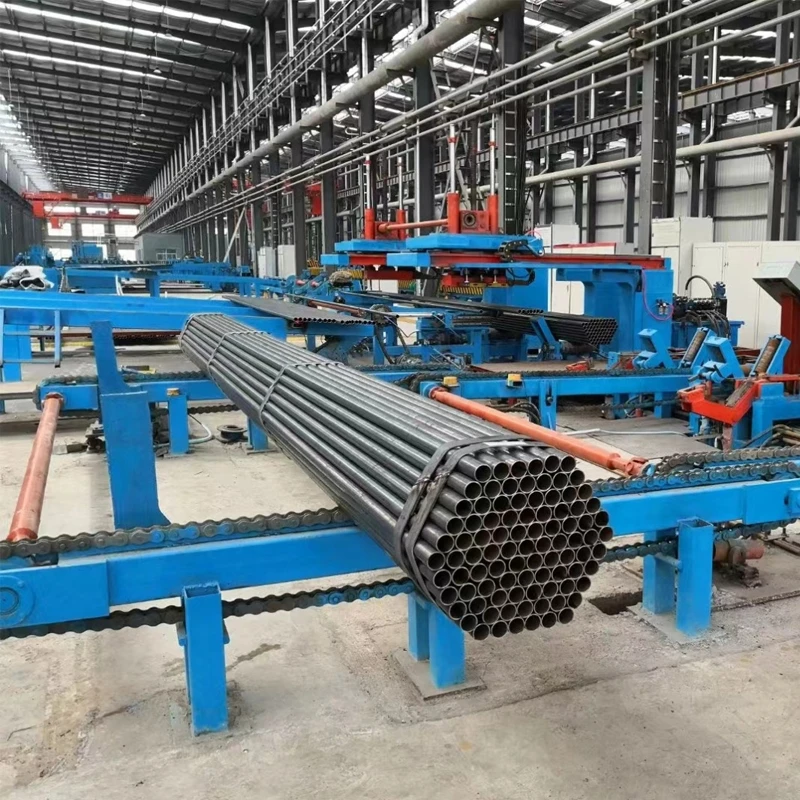Enhancing Precision in Metal Forming with Advanced Straightener and Roller Technologies
The Role of Straightener and Roller Machines in Modern Manufacturing
In the realm of modern manufacturing, the precision of metal processing is paramount. Among the various tools that enhance operational efficiency, straightener and roller machines play a crucial role. These machines are integral to various industries, including automotive, aerospace, and construction, where the quality of metal components can significantly influence the overall performance of products.
Understanding Straightener and Roller Machines
Straightener machines, as the name suggests, are designed to correct the distortions in metal sheets or strips that occur during the manufacturing process. Similarly, roller machines serve the purpose of shaping, bending, or flattening metal workpieces into desired forms. While they each have specific functions, they often work in tandem to ensure that the final products meet stringent specifications for both hardness and dimensions.
The straightening process typically involves passing the metal through a series of rollers or pins arranged in a specific geometric configuration. As the metal moves through this setup, it is subjected to controlled pressure, which effectively eliminates any bends or warps. The result is a flat and uniformly shaped metal piece ready for further processing or assembly.
Roller machines operate on similar principles, but their primary function is to change the shape of the metal. Roller machines can be configured for various applications, such as creating curves, forming edges, or producing specific profiles. The versatility of roller machines allows manufacturers to achieve complex geometries that are essential for many components in various industries.
Benefits of Utilizing Straightener and Roller Machines
1. Precision Engineering One of the primary advantages of using straightener and roller machines is the high precision they deliver. These machines can achieve tolerances that are difficult to replicate by manual processes, which is especially important in industries where even minor errors can lead to significant failures.
straightener and roller machine

2. Increased Efficiency Automation in metal processing has revolutionized the manufacturing landscape. Straightener and roller machines can operate at high speeds with minimal human intervention, significantly increasing throughput. This efficiency translates to higher productivity levels and ultimately reduces production costs.
3. Improved Material Utilization By ensuring that metal components are straight and uniformly shaped, these machines minimize waste. Properly processed materials are easier to work with in subsequent manufacturing stages, which can reduce scrap rates and make the overall process more sustainable.
4. Enhanced Surface Quality Straightening and rolling can also enhance the surface finish of metal components. A smoother surface not only improves the aesthetic appeal of the final product but also enhances performance characteristics, such as corrosion resistance and fatigue life.
Applications Across Industries
The applicability of straightener and roller machines is vast. In the automotive industry, for example, these machines are essential for preparing body panels and chassis components, ensuring that they fit together perfectly for optimal aerodynamics and safety. In aerospace, precision in metal components is critical since any discrepancy can lead to performance degradation or safety hazards.
Construction manufacturers also rely on these machines to produce metal beams, braces, and other structural components that must meet exacting strength and stability requirements. The energy sector benefits from roller machines in the fabrication of components for wind turbines and other renewable energy technologies, where both lightweight and strength are essential.
Conclusion
As technology continues to advance, the capabilities of straightener and roller machines are expected to evolve, incorporating more automation and smart technologies. This evolution will further enhance the precision, efficiency, and role these machines play in modern manufacturing processes. By ensuring that metal components are straightened and shaped to perfection, these machines help raise the standards of quality and reliability that customers expect from products in a competitive market. In this way, straightener and roller machines are not just tools but are essential contributors to the success of manufacturing industries worldwide.
-
High Frequency Straight Seam Welded Pipe Production Line-BzZhou Xinghua Machinery Equipment Manufacturing Co., LTD.|line pipe steel&welded gas pipeNewsJul.30,2025
-
High Frequency Straight Seam Welded Pipe Production Line-BzZhou Xinghua Machinery Equipment Manufacturing Co., LTD.|High Precision&Automated SolutionsNewsJul.30,2025
-
High Frequency Straight Seam Welded Pipe Production Line - BzZhou Xinghua Machinery Equipment Manufacturing Co., Ltd.NewsJul.30,2025
-
High Frequency Straight Seam Welded Pipe Production Line-BzZhou Xinghua Machinery Equipment Manufacturing Co., LTD.|Precision Welding, High EfficiencyNewsJul.30,2025
-
High Frequency Straight Seam Welded Pipe Production Line|BzZhou Xinghua|Precision Welding&EfficiencyNewsJul.30,2025
-
High Frequency Straight Seam Welded Pipe Production Line - BzZhou Xinghua|Precision Engineering&EfficiencyNewsJul.30,2025


